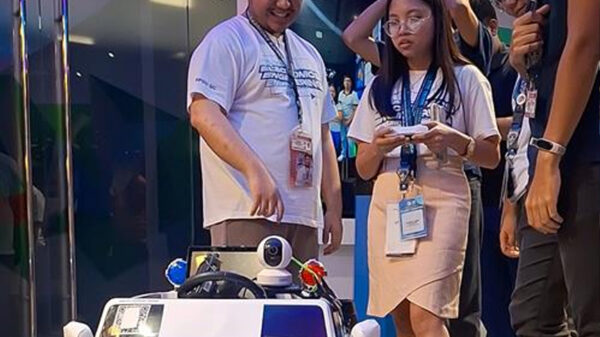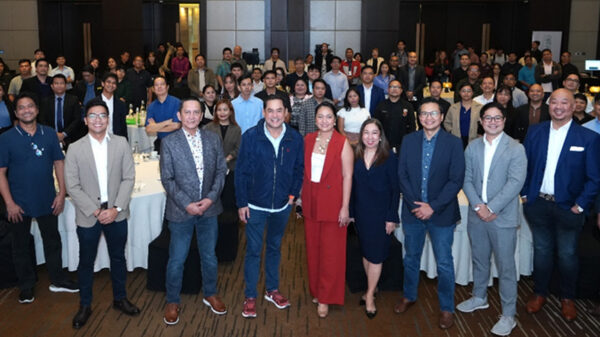By Stephen Kruger, Chief Technology and Product Officer, inDrive
Afanasii Petrov, Business Development Manager, Southeast Asia Macroregion, APAC, inDrive
Artificial intelligence (AI) is increasingly being integrated into all aspects of ride-hailing to drive efficiency and accuracy, lower costs, upgrade safety, and improve user experience. This comes at an opportune time in the Philippines, as the local ride-hailing and taxi market is projected to have a steady revenue increase, with total earnings hitting an estimated $1.063 billion by 2029. The integration of AI and machine learning can further boost operations and bring in higher revenues. Here are some areas in which AI can be integrated in ride-hailing services and how it can be further maximized in the future.
Improving user experience – from support to timing, supply, and user feedback
The days of wondering when your taxi will arrive are long gone. Now, ride-hailing services provide an estimated time for the driver’s arrival and when you’re likely to arrive at your destination even when “unforeseen events” take place. Using pricing and matching models can account for local conditions such as traffic surges, sporting events, and accidents – the more local data collected, the more accurate the prediction becomes.
These conditions can also affect the number of drivers available and in turn, customers’ ability to book rides. This information can create heat maps, guiding drivers to hot spots to increase supply where it’s needed the most. At the same time, it will benefit drivers because it creates more ride request opportunities.
AI is also improving customer service and support, much of which can be automated to improve self-service options. For example, AI can reduce the amount of boilerplate material a customer has to read, and provide more focused and relevant information. This reduces customer wait times, improves efficiency, and frees up staff to focus on more pressing issues.
In addition, AI has the immense potential to improve communication between drivers and passengers by enabling real-time translation. The Philippines, which has multiple local languages and dialects, makes this technology handy. AI-powered translation can facilitate communication between drivers and passengers who speak different local languages, enhancing the user experience.
AI can also be maximized when dealing with customer feedback. It can cluster and categorize this information into analytical data, making it easier to spot trends and infer customer sentiment and tone of voice. This is essential in highlighting emerging issues and areas for improvement.
Getting the price right
Machine learning can also improve the accuracy of pricing models. The use of AI in automating pricing can speed up responses to dynamic conditions. This will benefit both drivers and passengers, as drivers can increase their earnings during rush hour while passengers can successfully book at a price point that matches their expectations.
Streamlining processes and spotting fakes
Internally, AI can be used to improve operational efficiency by streamlining processes. For instance, security checks are now faster thanks to this. When a driver wants to register in the ride-hailing app, they must typically supply several documents, including ID and driver’s license. These are manually and digitally verified by a dedicated team of professionals using different filters. Experts are also currently testing machine learning-based features to identify fraudulent documents better.
In the Philippines where driver recruitment is continuously ongoing, the AI system is specifically tailored to properly recognize and verify local identification documents such as the Philippine Driver’s License and National ID, streamlining the verification process and ensuring compliance with local regulations. Hence, AI can make spotting fakes more reliable and quicker, ensuring the safety and security of its users and speeding up legitimate drivers’ verification process. It can also strengthen security ecosystems in various ways such as validating users’ identities via facial recognition and using machine learning to review users’ profile images to exclude sensitive, potentially dangerous or commercial content.
The challenges
AI and machine learning can make a considerable difference to the quality and safety of ride-hailing services, however, several challenges are still present. For one thing, models tend to “drift”, slowly becoming less relevant over time, so they require retraining. As such, AI learning capabilities must be constantly improved so that models keep themselves updated – in effect, teaching them to teach themselves.
For starters, AI users must adapt to different countries’ laws and regulations, balancing technological advancement with privacy protection and societal well-being on a regional basis. In countries such as Germany, personal data belongs to an individual and neither companies nor regulators can approach it. Meanwhile, in other countries, data belongs to the government. In the case of the Philippines, the Data Privacy Act of 2012 stringently protects users’ personal information. Hence, the approach must vary in response to local rules and regulations; there’s no one-size-fits-all solution.
In addition, users must protect the personal data they collect. This can be achieved partially by obfuscating data in a way that conserves its contextual value but hides the customer’s personally identifiable information (PII). Moreover, users can ensure the privacy and security of the data that they collect by limiting access to a strictly need-only basis.
As in many other industries, AI and machine learning enable ride-hailing to evolve rapidly in quality, safety, and efficiency, affecting all aspects of the business. Its integration into the Philippine ride-hailing market is especially welcome as this will make hitching a ride faster and more efficient, benefitting drivers and passengers. The use of AI has already gone from a futuristic technology to a mainstay of the present — you’re experiencing its benefits every time you hail a ride.








































































































